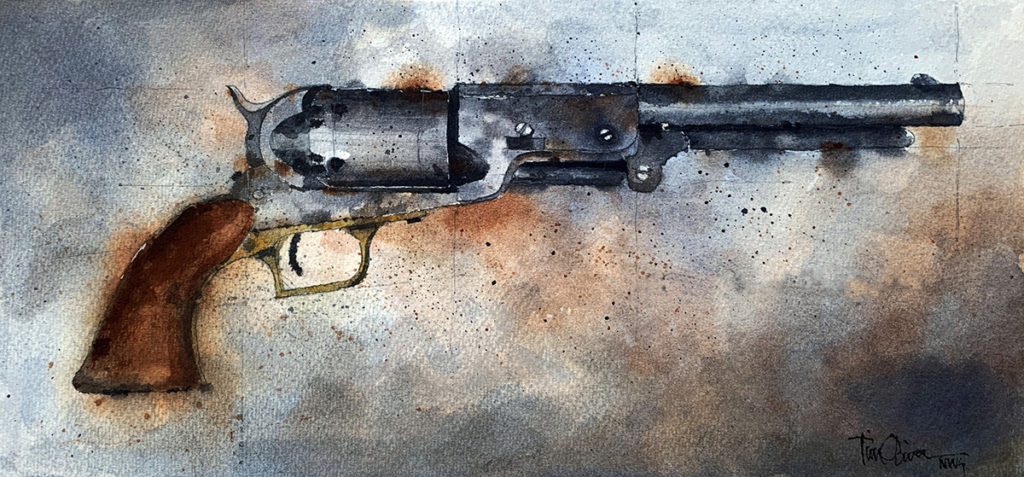
How did you get started and then develop your career?
Tim Oliver: I was first introduced to watercolor in 1981 as a landscape architecture student at Texas Tech University. I had a friend in the architecture program who mesmerized me with his skill at rendering his illustrations. At the time, landscape architecture students were not taught watercolor as a rendering medium. Instead, all of our rendering was done with design markers on blueprint paper. I fell totally in love with the effects that he was achieving with watercolor. The transparency, the way the colors moved and blended, the dry-brush technique and the detail that he was able to achieve all came together to entrance me with the medium.
My first attempt with a cheap scholastic watercolor set, a bad brush and thin typing paper left me frustrated and disillusioned. While that initial attraction to watercolor remained with me, it was not until 2009 that I found myself in a life situation that allowed me a new beginning with the medium. My painting career continues to develop as I experiment and discover new ways to tell the stories in watercolor. I’m a firm believer that sketching and painting outside is vital to my growth as an artist. There is absolutely no better reference material than the sketches, studies and finished paintings that I can only get from being on location. Seeing the light, feeling the wind, hearing the sounds and smelling the smells are vital to my process.
How do you describe success?
I describe my personal success really only in two ways. First, if my work can evoke an emotion, any emotion really, in someone who views it, then I consider it a success. Secondly, if I can gain a sense of satisfaction from a piece or learn something that will further my craft, then it is certainly successful.
How do you find inspiration?
Inspiration comes to me in several ways I think. In my daily life, I’ve trained myself to be observant and to view everything as a potential composition. Everywhere I go and in everything I do, I’m looking for an evocative subject to paint. I’m also an avid sketcher. Pencil or pen on paper is really probably my first love. As I translate a subject or a scene from life to a two-dimensional graphite composition on paper, I find my inspiration. It’s in the sketch that I can manipulate the scene, play with darks and lights, push something here or pull something there. This is where excitement and inspiration begin for me. I’m always drawn to things western, rural, gritty and seemingly mundane or ordinary. Anything evocative of a ‘time long passed by’ will always capture my attention.
Who do you collect?
I collect art that inspires me and is painted by artists that I have a love and appreciation for. I have a really great collection of paintings from artist friends who I have painted with. The collection is priceless to me because each painting, while inspirational, also represents a friendship that I treasure. I have pieces by Iain Stewart, Joseph Zbukvic, Lisa Wang, Richard Sneary, Mat Barber Kennedy, Lon Brauer, Dan Marshall, Jason Sacran, John Lasater, Brienne Brown, Charlie Hunter, Paul Kratter, Greg Summers, Jill Basham, Laurel Daniels, and Richie Vios.




To see more of Tim’s work, visit: www.timoliverart.com








